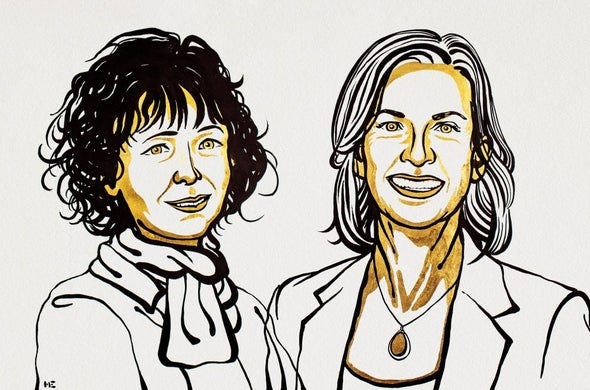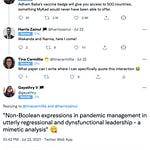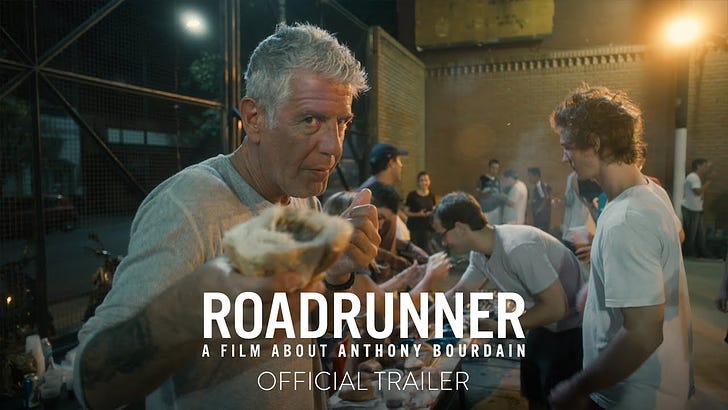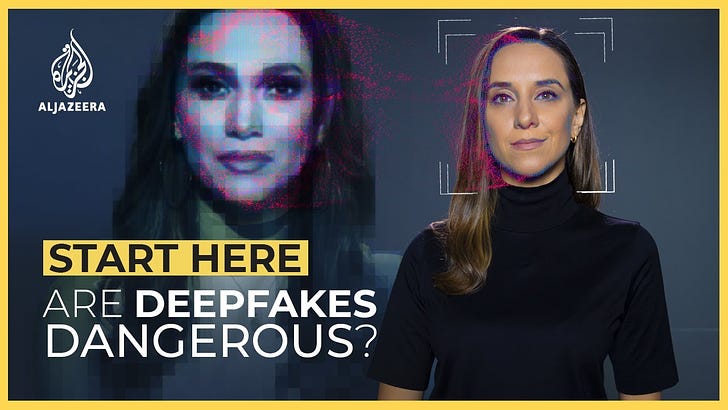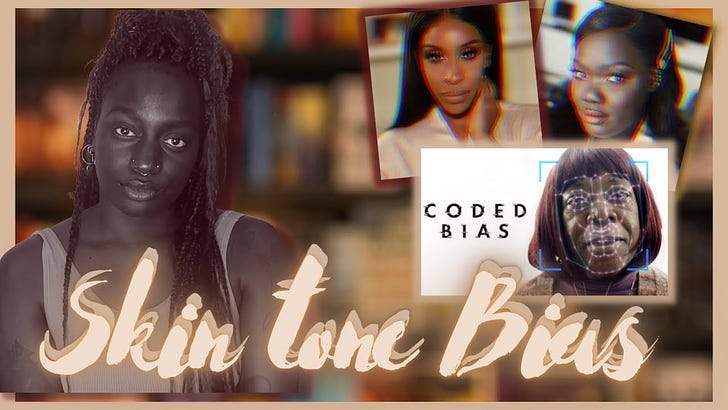Old Tech is dead, long live Old Tech
Kate Cox for Ars Technica: John McAfee arrested, indicted on tax evasion charges. McAfee founded his eponymous computer security firm in 1987. I remember those pesky McAfee pop-ups.
Jonas Richner: How Flash shaped the video game industry. On December 31st, 2020, Google Chrome will stop supporting Flash Player for good. I remember making Flash games in computer science classes in matriculation college.
Leo Kelion for BBC: Why using Microsoft Excel caused England’s COVID-19 results to be lost. The developers picked an old file format, .xls, to pull the data together, which could only handle about 65,000 rows rather than the one million plus rows that the software is actually capable of. Using .xlsx would have prevented the error.
Mehr Nadeem for Rest of the World: How the Iranian diaspora is using old-school tech to fight Internet shutdown at home.
Cut-and-paste title here
The Nobel Prize in Chemistry was jointly awarded to Emmanuelle Charpentier and Jennifer Doudna for their work on CRISPR-Cas9, a genome editing method.
It’s a relatively recent work – only eight years ago did they co-author their first paper describing CRISPR-Cas9. Now, the ‘genetic scissors’ are used in medicine to find the cure for genetic disorders such as sickle cell disease and in agriculture to create hardier crops. Controversially, in 2018, Chinese scientists used the technology to edit human embryonic genes to create genetically modified babies.
In 2017, I produced an interview with neurogeneticist Dr Azlina Ahmad Annuar about the science and ethics of genome editing. You can listen to it here; she is an excellent science communicator. If that doesn’t convince you, here’s a spoiler: In it, she hinted of her suspicion of scientists creating genetically edited babies – a year before the He Jiankui affair was publicised.
Ishino and Mojica’s bacteria 🔬
Nevertheless, it should be noted that there would be no CRISPR-Cas9 without Yoshizumo Ishino’s 1987 description of strange sequences of DNA in E. coli that became the basis of the discovery of CRISPR by microbiologist Francisco Mojica. Mojica first identified the repetitive DNA sequences in 1993 and found that similar sequences were common in prokaryotes such as archaea and bacteria.
He demonstrated that the sequences matched genetic materials in bacteriophages, which are viruses that infect bacteria. By the early 2000s, he hypothesised that they were an innate part of the microbial immune system, but it was rejected four times by leading science journals until it was published in 2005. He called the sequences Clustered Regularly Interspaced Short Palindromic Repeats, or CRISPR.
Mojica agrees being an outsider, not coming from somewhere like Harvard, meant his ideas weren’t readily accepted. But the hostile reception was also due to how surprising the findings were.
Doudna and Charpentier’s scissors ✂️
In simple terms, CRISPR helps microbes fight off viral infections by cutting the virus’ DNA, inactivating it. Doudna and Charpentier built on this knowledge to programme the CRISPR system to cut other pieces of DNA. They use CRISPR-associated proteins, or Cas. There are other Cas enzymes but Cas9 comes from the strep throat bacteria.
They re-engineered Cas9, so that it can be instructed to snip predefined and specific parts of the DNA. CRISPR-Cas9 system has a guide RNA that determines where the cleavage site is. The guide RNA’s nucleotide sequence is manipulated to target any DNA sequence for cleavage. When the strand is broken, the cell’s system stitches the two ends together. To ‘cut-and-paste,’ you can insert replacement sequences at the splice site before the repair system kicks in.
Similarly, biochemist Feng Zhang modified the CRISPR-Cas9 to make precise genome cuts in human and mouse cells, as did George Church. But it was biochemist Dana Carroll who first developed a genome-editing method using enzymes, called zinc-finger nucleases, first described in 1996 – before CRISPR was adapted.
Ugh, the future is female, amirite👩🔬
The announcement makes it the first time the award has gone to two women, making them only the sixth and seventh women in history to win the chemistry prize. Some (1, 2, 3, 4) have expressed disappointment and/or surprise that Mojica, Zhang, Church or even Carroll were overlooked.
I think it is what women like Rosalind Franklin (the double helix), Lise Meitner (nuclear fission), Hedy Lamarr (Wi-Fi, CDMA, Bluetooth) – just to name a few – felt like when they made a discovery, only for the men to take all the credit.
I guess the winning duo will also win the patent battle.
What I read, watch and listen to…
I’m reading about why I should read Boethius, by John Marenbon.
I’m watching a TikTok trend by Indonesians threatening to expose their affairs with members of the country’s House of Representatives (DPR) if they do not revise or cancel a controversial labour law.
I’m making siren and flashing light.
Chart of the week
Abbie Richard’s conspiracy chart, although I question whether #FreeBritney is appropriately placed:



